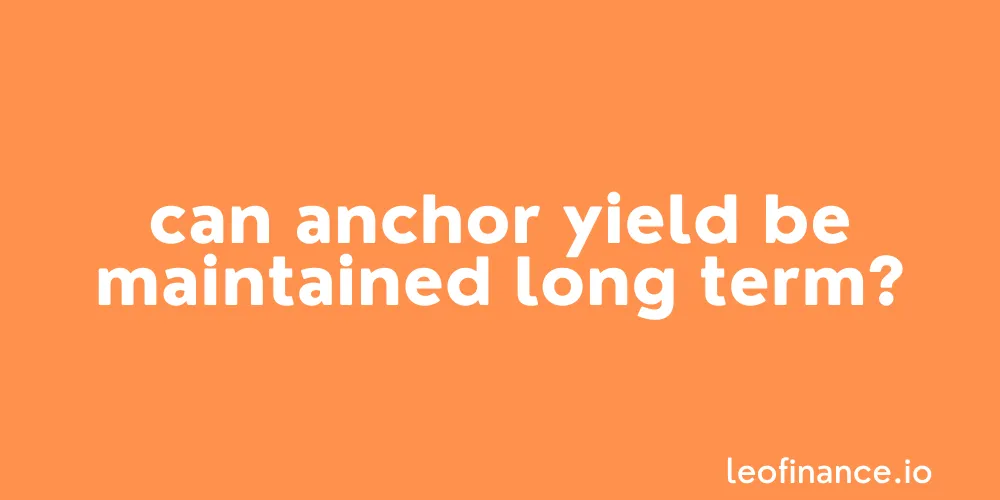
Direct from the desk of Dane Williams.
A look at whether Anchor can maintain its yield over the long term.
Anchor is the premier Terra (LUNA) based savings protocol that has always offered investors low-volatile yields on Terra stablecoin deposits.
The 20% yield on offer for staking the network’s native stablecoin UST, is obviously an extremely competitive rate.
But after already taking a look at where Anchor yield comes from, let’s now move onto the protocol’s current situation and discuss whether Anchor yield can be maintained long term.
The problem facing Anchor’s yields
In yesterday’s blog we spoke about the current imbalance that exists between loan demand and deposits on Anchor.
As the market dips, this imbalance continues to be exaggerated.
This is because demand for more risky UST borrowing falls and staking to seek the stable 20% return rises.
What this means is the Anchor reserves are depleted faster and faster as the market falls, essentially creating a snowball effect that could get out of hand.
The market drop through January has highlighted the vulnerability in Anchor’s ability to maintain its yields over the long term.
All that the market has shown is that fixed rates like Anchor’s 20% may not be sustainable over the long term.
The answer to maintaining Anchor’s yield
With the problem facing Anchor’s ability to maintain its 20% APY now apparent, Terra’s sugar daddy Do Kwon has been forced onto Twitter to address the issue.
Check out the following Twitter thread from Do, addressing Anchor’s ability to maintain its yield:
As you can see, Do isn’t giving up on Anchor’s ability to maintain its yield and looks happy to die on that hill.
"If we were to get to this hypothetical situation (where the reserves went to zero), Anchor will still offer the highest return on stablecoins. By far. It will be fine,” said Do.
However, the exact nature of the corrective measures required for Anchor’s yield to be maintained long term is not clear.
Technically, it just may not be possible.
The protocol may be forced to function in exactly the same way as any other DeFi protocol that sees yields fluctuate alongside supply/demand.
Final thoughts on staking algorithmic stablecoins
As I’ve already highlighted in our list of best algorithmic stablecoins blog, Hive Backed Dollars (HBD) are another option available to investors.
Both are algorithmic stablecoins with similar mechanisms used to maintain their respective pegs.
The biggest difference when it comes to HBD however, is that the 12% yield on offer does not require an extra level of risk via an app residing on top of the blockchain.
The interest comes from the blockchain level itself, making earning yield on HBD in savings a lower risk option than staking UST on Anchor.
Some food for thought either way.
Best of probabilities to you.
Posted Using LeoFinance Beta
Return from Can Anchor yield be maintained long term? to forexbrokr's Web3 Blog

